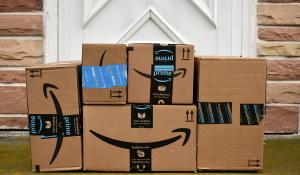
Li Qiang, founder and executive director of New York-based China Labor Watch, often sends undercover investigators to work in electronics supplier factories in China. They report back on the labor conditions they experienced, which CLW uses as ammunition to advocate—on the ground in China and with US corporations that use the factories—for better pay and conditions for workers. In 1999, shortly before founding CLW, Li decided to go in and work for himself in a factory that made electronics for US retailers, and he also interviewed workers at China’s Foxconn factory, which would go on to make iPhones and iPads for Apple.
The average worker on the production line in a supplier factory for Apple and other electronics manufacturers in China will labor for at least 12-hour shifts, with perhaps an hour break total. She (or he) will work six or seven days a week, particularly during high production times (think when Apple is introducing a new iPhone). Supervisors will put immense pressure on the worker to meet high quotas, so she’ll have to work very quickly at repetitive tasks like wiping screens with a chemical or putting plastic cases into a molding machine.
When she finishes the workday, she’ll have a simple meal in the factory dormitory—as she’s likely a migrant worker who traveled far from home to an industrial area seeking employment. She’ll go to bed, sharing a room with up to 12 people who may not speak her dialect or be from her region in China—all the better to keep workers isolated so they won’t try to organize.
And then she’ll go to sleep, get up in the morning, and start again.
The work is so intense that many factories will only hire people under the age of 35 or 30, because they need tremendous energy to toil at the necessary pace for such long shifts, says Li.
He held to this schedule for four weeks. “Working that intensely for a month was enough to convince me to do this work for life,” he says of China Labor Watch’s mission to improve pay and conditions for exploited workers in the country. “Chinese workers are treated like robots.”
But it’s not just the frenetic pace and the long hours that make life difficult for the people who labor in the factories that supply cell phones and other gadgets to major retailers. Many are being systematically poisoned, as well.
Danger in the Factories
Millions of workers toil in factories in China. Many on the production lines are exposed to toxic solvents and other chemicals, but they receive very little training in how to safely manage those substances. What investigators from non-governmental organizations on the ground in China have found is that workers in electronics supplier factories, in particular, are often exposed to thousands of undisclosed chemicals.
In fact, one 2010 study in the Journal of Environmental Health and Preventive Medicine showed that between 1991 and 2008, there were nearly 42,000 workplace poisonings in China. And these are only the poisonings that were serious enough not to be swept under the proverbial rug by employers.
Two that have been documented in Apple supplier factories are the potent toxins n-hexane and benzene.
Determined to be a known carcinogen by the US Department of Health and Human Services, benzene can cause leukemia, a blood cancer, and leukopenia, a life-threatening condition in which one has an abnormally low white blood cell count. Benzene is banned or restricted in many Western countries for industrial use and prohibited in the US in products intended for use inside the home.
The chemical n-hexane is a neurotoxicant that can cause nerve damage and paralysis when one is constantly exposed to it, according to the Department of Health and Human Services.
Workers at supplier factories for major electronics companies use both chemicals to clean smartphone and tablet touch screens. It dries faster than alcohol.
Consequently, many of these workers are succumbing to benzene and nhexane poisoning, as documented in the short film Who Pays the Price? The Human Cost of Electronics, created by Heather White.
![gam-protest-pic-web[1]_0](/sites/default/files/inline-images/gam-protest-pic-web%5B1%5D_0.jpg)
Bad Apple Campaign protestesters outside New York City Apple store, April, 2014.
Apple isn’t alone. For example, activists in South Korea recently uncovered 58 cases of leukemia and other blood-related cancers in several Samsung plants in the country that they say is no coincidence, according to Bloomberg BusinessWeek.
However, Green America’s newest campaign targets Apple with the aim of pressuring this industry titan to use some of its legendary innovation to lead the way in protecting workers in electronics supplier factories.
“Apple management has cared in the past about other environmental and social issues, and they care about the company’s reputation,” says Elizabeth O’Connell, Green America campaigns director. “We believe that Apple is likely to be the first company to change on this issue, and a change from Apple could have a huge effect on the entire industry.”
It wouldn’t cost much for Apple to shift, either. Industry experts told Green America that Apple could switch to safer alternatives to n-hexane and benzene for as little as $1 per iPhone. It’s a mere pittance compared to what Apple makes on each of these gadgets—the company’s profit margins per iPhone are close to 40 percent, which translates to several hundred dollars in profit per device.
Conducted in partnership with the activist arm of The Nation and China Labor Watch, Green America’s Bad Apple campaign is calling on the company to:
- Eliminate toxic chemicals. End the use of the most dangerous chemicals in Apple supplier factories and replace them with safer alternatives.
- Ensure adequate medical treatment. Create a fund to pay for the treatment of injured workers and ensure that all workers injured while making Apple products receive adequate treatment.
- Stop worker abuse. Ensure compliance with the International Labour Organization’s Fundamental Principles and Rights at Work; article 32 on the UN Convention of the Rights of the Child; and national laws regarding occupational health and safety, worker benefits, and minimum wage for all workers.
(Read our blog post on Why Apple?»)
One Worker’s Story
After Apple CEO Steve Jobs succumbed to pancreatic cancer in 2012, the Jobs family made it a priority to ensure that Apple employees in the US have a stateof- the-art medical plan.
In stark contrast, workers in Chinese supplier factories for Apple and other manufacturers are dying from preventable illnesses contracted on the job.
When Chen Qianqian was in the third grade, her mother left home to find work in the city. She’s one of 260 million migrant workers in China who must travel far from home to secure a job and earn enough money to support their families, according to China’s National Bureau of Statistics.
When Chen was in the seventh grade, she stopped hearing from her mother. The disappearance haunted her throughout the rest of her childhood, so when she came of age, she, too, left home to find factory work in the city, clinging to the dream of also finding her mother.
“I wanted to find her, to rescue her. My mind was set on earning as much money as possible,” she relates in the film.
She started working at an electronics supplier factory China. Filmmaker Heather White says that typical days for the factory workers with whom she spoke started at 8 a.m. and ended at 11 p.m., with only one night off a month.
As another worker at a different electronics factory related to White and Zhang, “We sat there all day cleaning phone screens and using chemicals. When I wasn’t eating or sleeping, I would be wiping something. It was the only thing I did. There was no other ventilation, no windows. The smell was horrible at first, but I eventually got used to it.”
Exposed to benzene on a daily basis while cleaning smartphone and tablet components, Chen contracted leukemia and spent months trying to get compensation from the factory.
“They concluded that my cancer was not caused by working at the factory, and I was denied compensation,” she says. Despite the fact that she was working daily with a category 1 carcinogen linked to her type of cancer.
White says Chen had to pay for her chemotherapy and hospitalization out of pocket and by borrowing from family.
“Her mom is not in the picture, so there weren’t that many people to borrow from,” says White. “She didn’t get the level of treatment she deserved.”
Of her search to find her mother, Chen says, “Everything is over.”
![workers-stories[1]_0](/sites/default/files/inline-images/workers-stories%5B1%5D_0.jpg)
WHO PAYS THE PRICE? All three of the people pictured above worked at supplier factories for electronics manufacturers. Right to left: Li (not her real name), who started working in a Foxconn supplier factory at age 14, suffered nerve damage and paralysis after being exposed to n-hexane. Ming Kunpeng committed suicide at 26 after years of dealing with leukemia caused by occupational benzene exposure. Chen Qianqian was hospitalized with leukemia from benzene poisoning. Learn more about their stories in the film Who Pays the Price?, available to watch free at Green America’s bad-apple.org.
Audits for What?
Before Green America and our allies launched the Bad Apple campaign, we reached out to Apple management with the demands listed on p. 15. Their response was that the company “meetsor exceeds” US safety standards in its supplier factories.
Via a statement about the campaign in Computer World magazine, the company added, “Last year, we conducted nearly 200 factory inspections which focused on hazardous chemicals, to make sure those facilities meet our strict standards. We also provide suppliers with training in hazardous chemical management, industrial hygiene, and personal protection equipment as part of the Apple Supplier EHS Academy in Suzhou, China.”
But a closer look into those claims reveals troubling gaps. Take, for instance, the inspections Apple says it provides.
Jack Linchuan Qiu, a professor at the Chinese University at Hong Kong and advisor for Students and Scholars Against Corporate Misbehavior, says that most corporate audits in China, Apple’s included, are simply not effective.
“Only a small proportion of a brand’s supplier factories are audited each year, and the vast majority of these facilities receive advance warning of such audits,” says Qiu. “This allows for management to prepare to ‘pass’ any inspector’s test, and allows brands like Apple to falsely claim vast compliance of their corporate codes of conduct.”
And Heather White reports that the Chinese workers she interviewed for "Who Pays the Price?" told her they’ve never seen an auditor on the floor who was looking into worker safety. However, they do report having quality-control auditors hang over their shoulders to ensure that the factory employees maintain Apple’s high product-quality standards.
White relates a conversation she had with a British engineer who was wholly employed by Apple and worked in an Apple supplier factory in China. “He told me there’s no sign of Apple on the labor standards front,” she says. “What he did see were at least 40 inspectors per week—and none were there for labor standards, just quality control. There’s a serious disconnect between what Apple would like us to believe and the reality for people in the factories.”
As for the hazardous chemical training Apple claims it provides, the company claimed in its 2014 “Supplier Responsibility Report” that “240 factory personnel” went through an 18-month curriculum aimed at raising the level of environment, health, and safety expertise in its supply chain.
Keep in mind that roughly 1.5 million people currently toil in Apple supplier factories in China—so each of those 240 people would have to pass their training on to hundreds or even thousands of others, especially given the high 20 percent monthly turnover in the factories.
“Chinese law requires that every worker receive 24 hours of occupational safety training, but at the Apple suppliers CLW has investigated, we’re still seeing workers trained for ten minutes before they’re put to work,” says Slaten. “The average is more like an hour, which is insufficient.” He adds that the “protection equipment” Apple says workers are provided is often inadequate: They often have to ask for said equipment, and it generally amounts to a paper mask and cotton gloves. The US Centers for Disease Control and Prevention recommend a gas mask and a full-body, chemicalresistant suit when dealing with chronic occupational exposure to benzene.
A Lack of Enforcement
While some of the blame for worker poisonings rests on the factories, it’s the brands that hold the real power to change the system.
Chinese labor laws are quite strong in many ways—even including longer maternity leave and stronger overtime restrictions than in the US. The problem is a lack of enforcement. Ted Smith, coordinator of the International Campaign for Responsible Technology, notes that local officials have a strong interest in encouraging economic growth, so when workers dispute their treatment, local officials will often side with local factories in the interest of growth. And Western corporations move in to take advantage of the lax enforcement of labor and environmental laws in a troubling race to the bottom.
“Even if they wanted to, the Chinese factories would have trouble providing adequate hazardous-chemical training while also meeting the needs of Apple,” says Green America’s O’Connell. “Apple puts them under intense pressure to meet its high production quotas, especially during high-demand periods, such as the release of the latest iPhone. If Apple relaxed its timeline demands, that would make a difference for workers.”
The Financial Times reported in 2012 that iPhone supplier factory Foxconn earned a profit of $8 per iPhone, compared to Apple’s $319 per per iPhone. This discrepancy makes it very difficult for local suppliers to have power in negotiations, because companies like Apple can go to another factory to meet their price and time requirements. The combination of timeline and financial pressures is deadly for workers, as the factories cut corners on working conditions and employee benefits to remain in the black.
In short, it’s Apple and other brands that hold the power to improve conditions for workers. And it’s their customers who can make them wield that power.
![factory-gam-web[1]_0](/sites/default/files/inline-images/factory-gam-web%5B1%5D_0.jpg)
Workers at electronics supplier factories in China are being subjected to toxins that cause problems ranging from skin rashes to leukemia.
Apple, Take the Lead
There is a precedent for Apple to make radical shifts. Two years ago, Greenpeace slammed Apple for using dirty energy from coal-fired plants to store its cloud data. Fast-forward to 2014, and Greenpeace is now lauding the company for its “aggressive” commitment to powering its data centers with renewables.
After the Dodd-Frank Act mandated that publicly traded companies must report as of 2015 on their use of potential “conflict minerals”—or minerals whose sale is used to fund wars—Apple published its results early and announced plans to cut conflict minerals completely out of its supply chain.
And it recently announced it would take back used Apple electronics at its retail stores worldwide for reuse, or recycling with e-Stewards-certified Sims Recycling Solutions.
In addition, says O’Connell, “Apple normally doesn’t acknowledge activist campaigns, so it’s a good sign that it responded to ours.” In other words, concerned citizens have influenced Apple to change in the past, and we can do it again.
“Green America isn’t asking you to give up your smartphone,” says O’Connell. “But it’s important to use your voice as a cell phone customer to stop worker poisonings in the factories.” Take action today. Together, we can push Apple to eliminate toxins from its supply chain, ensure adequate medical treatment for workers, and stop worker abuse. And where Apple goes, the other brands will follow.







